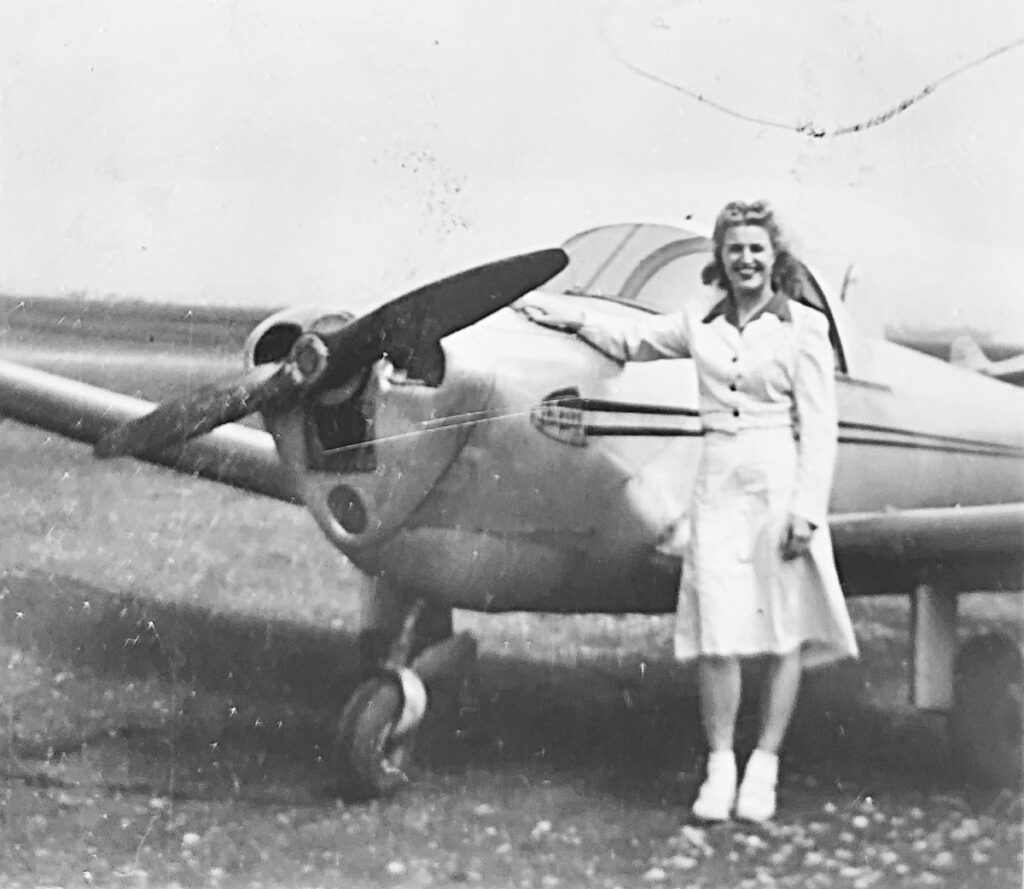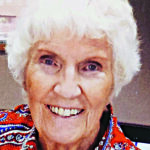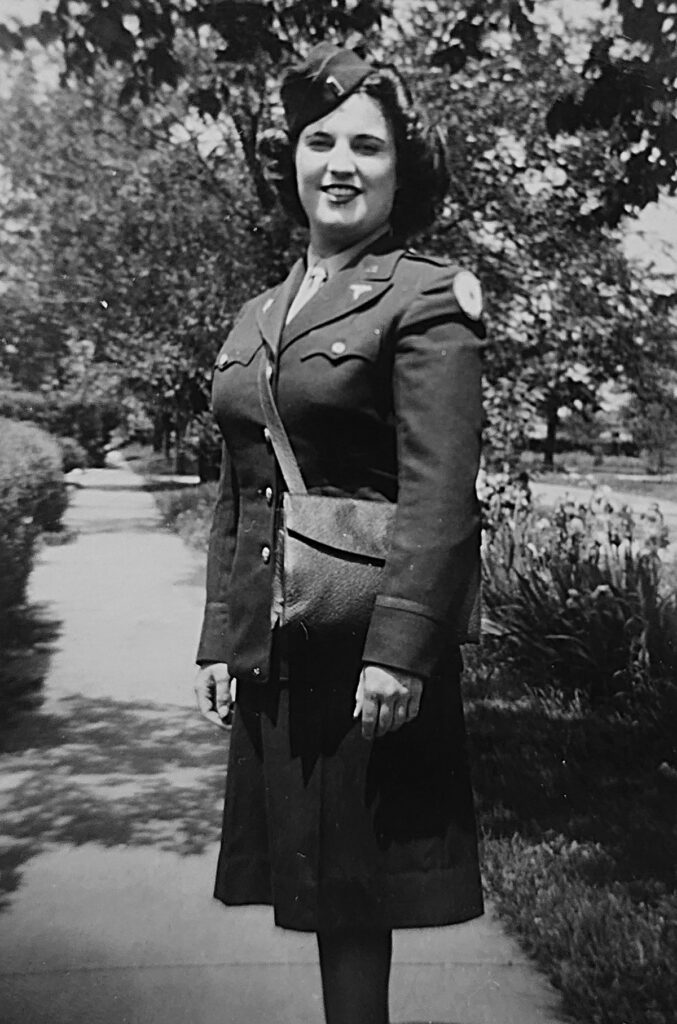Nora Leman, née Nicolai, was entering nursing school as the United States became embroiled in World War II.
Born on Oct. 6, 1923, Leman graduated high school at the age of 17, but had to wait until she was 18 to enter Roseland Community Hospital School of Nursing in Chicago in 1941.
On Dec. 7, 1941, Japan launched a surprise attack on the U.S. Pacific Fleet at Pearl Harbor in Hawaii. Within four days the U.S. had declared war on Japan, Germany and Italy.
Fewer than 7,000 Army nurses were on active duty at the outset of the war, but there were thousands of nurses registered in the First Reserve of the American Red Cross Nursing Service. These reserve nurses were activated to bring the number of Army nurses to more than 12,000 by June, 1942.
Back in the U.S., Leman and the other seven first-year students were going through their training. According to Leman’s daughter Sandy Schepke, the students began wearing a plain uniform and added an apron, a bib, and a cap to their garb as they progressed.
The cap was presented in a “capping ceremony” before family members, said Schepke. During the ceremony, senior students would traditionally ransack the rooms of the freshmen, but Leman had other ideas. She returned home and collected small snakes to place in the drawers of her room.
“Mom said screaming was heard coming from a couple floors above the ceremony,” Schepke said. “Ransacking never again occurred following the strategic placement of some small snakes.”
Back in the Pacific Theater, Japan attacked U.S. military bases in the Philippines. U.S. and Filipino soldiers fought on half rations for months. In May, 1942, the military hospitals at Bataan and Corregidor were captured, including 66 Army nurses, 11 Navy nurses, and one nurse-anesthetist.
These nurses are the largest number of American women taken prisoners of war at one time in U.S. history. They continued nursing during their captivity and became known as the “Angels of Bataan.” All survived brutal conditions until the end of the war, and they each received a Purple Heart in honor of their service.
In spite of the dangers facing military nurses, Leman and her roommate at nursing school decided to enlist after graduating in 1944. The recruiter in Chicago told them if they were joining to get a man, the military didn’t want them. Leman retorted, “I can go out in the street and get any man I want!” She then joined the Army.
In 1944, the U.S. began the liberation of the Philippines, and Leman served at five military hospitals there.
One day, a young, “nice looking” enlisted man, Ivan Leman, came to the ward where Nora was serving and struck up a conversation.
Leman told him that she was from a small town south of Chicago, and he told her that he was from the Peoria area. “From then on we knew we’d get married,” she said.
There was one problem though: Nurses, who were officers, were not supposed to “fraternize” with enlisted men. But the couple had an important ally during their courtship: The top sergeant was also fraternizing with a nurse.
“He was nice, he’d go down to the motor pool and get a great big car,” said Leman, who added the two couples would drive to the next town to have some drinks and go dancing.
As part of Leman’s rotations, she served on a ward that was officers-only. One patient would be up and about with his buddies during the day, but would hop into bed at “chow time,” requiring the nurses to serve his meals.

After World War II ended, Nora Leman earned her pilot’s license, which she used to visit her fiancé in the Peoria area. “I flew from the Chicago area to Mt. Hawley, no phone, no nothing. You had a big map,” she said. “Twice I did it.”
SUBMITTED PHOTO
In appreciation of Leman waiting on him, the officer asked her if there was something he could do for her, and she told him that she would like a driver’s license. Though he hesitated initially, he arranged it.
Leman still has the light green, paper military driver’s license dated Dec. 22, 1945, in her purse. Various vehicles including amphibious trucks, tanks, tractors and cars are listed. Everything is crossed out except “Car, passenger” and “Trucks, cargo, quarter-ton.”
“I carry it with me every minute,” she said, “I can drive a passenger car, but I can’t drive a tank.”
Victory was declared in Europe (V-E Day) on May 8, 1945, and in Japan (V-J Day) on Sept. 2, 1945. The Army Nurse Corps reached peak strength in August 1945 at more than 57,000 nurses.
After the war, Leman used the $3,000 in veteran educational funds available to her to get her pilot’s license, which she used to visit her fiancé in the Peoria area. “I flew from the Chicago area to Mt. Hawley, no phone, no nothing. You had a big map,” Leman said. “Twice I did it.”
Nora and Ivan were married on April 26, 1948, and had one daughter, Sandra, who followed in her mother’s footsteps and also became a nurse.
To learn more about the history of nurses in the military go to: www.health.military



2 comments for “Some fun from our Greatest Generation from WWII Nurse Nora Leman”
Recent Comments
Nora, who I’ve always known as “Nicky” is truly one remarkable woman! This article really brought out her spunky, can-do spirit… I learned even more about her amazing life; she is an inspiring person! I was recently thrilled to introduce my great-granddaughter, also named Nora to her. And Sandy is such a sweet & giving daughter/caretaker – I’m blessed to know them both!!
Respect to Nurse Leman and all the other nurses who served their profession with the dedication and integrity that defines our tribe. I enjoyed reading this story of a well-lived life and hope that we nurses honor all those who served our nation and communities with pride. We salute you all!